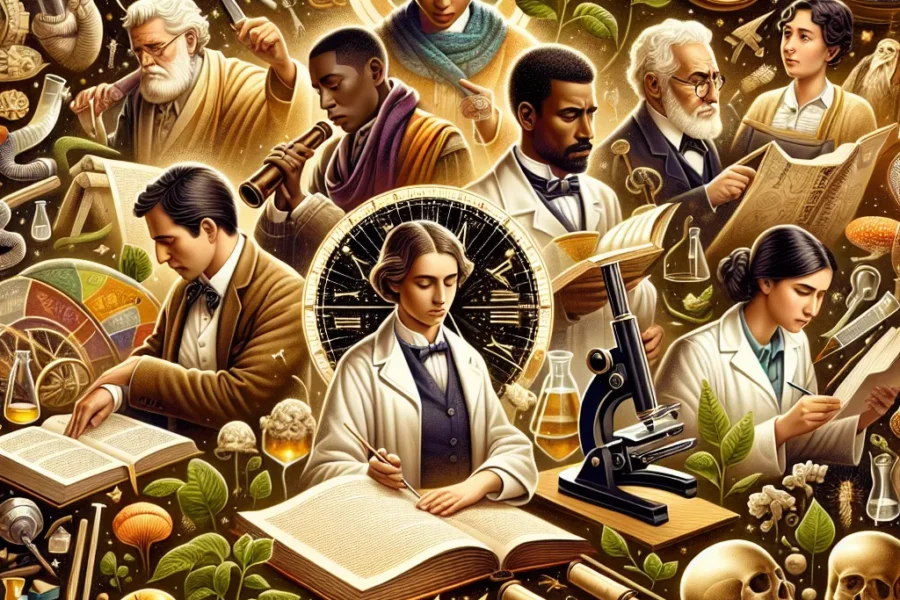Title: The History and Evolution of Emotional Intelligence Testing
Emotional Intelligence (EI), also known as Emotional Quotient (EQ), has emerged as a crucial metric in understanding human potential. It measures an individual’s capacity to recognize, comprehend, and effectively manage both their own emotions and those of others. While traditional IQ tests focus on cognitive capabilities, EI testing delves into the nuanced world of emotional awareness and social competence – skills that have proven increasingly valuable in our interconnected world.
If you want you know your own IQ, we have a free iq test here.
The concept of emotional intelligence has roots stretching back to the early 20th century, when pioneering psychologists like Edward Thorndike introduced the groundbreaking concept of ‘social intelligence.’ However, it wasn’t until the 1990s that EI truly gained scientific recognition through the revolutionary work of psychologists Peter Salovey and John D. Mayer, who transformed our understanding of human intelligence.
Salovey and Mayer’s definition of emotional intelligence introduced a sophisticated framework encompassing four key domains: emotion perception, emotional reasoning, emotional understanding, and emotion management. Their model revolutionized how we approach emotional competence assessment and remains foundational in modern EI testing.
The evolution of EI testing began with the Multifactor Emotional Intelligence Scale (MEIS), developed by Mayer, Salovey, and David Caruso in the mid-1990s. This pioneering assessment tool marked the first systematic attempt to measure emotional intelligence through performance-based tasks, though it has since been superseded by more refined instruments.
Daniel Goleman’s 1995 bestseller “Emotional Intelligence: Why It Can Matter More Than IQ” catalyzed widespread public interest in EI. Goleman’s mixed model expanded beyond pure ability measures to include personality traits like motivation and resilience, leading to the development of more comprehensive assessment tools.
The corporate world quickly embraced Goleman’s insights, leading to the creation of the Emotional Competence Inventory (ECI) and its modern successor, the Emotional Intelligence Appraisal, featured in “Emotional Intelligence 2.0” by Travis Bradberry and Jean Greaves. These tools have become essential in organizational development and leadership training.
Reuven Bar-On’s contribution to the field through his Emotional-Social Intelligence Model and the corresponding EQ-i assessment has provided valuable insights into the relationship between emotional capabilities and social functioning. The EQ-i evaluates multiple dimensions of emotional-social intelligence, offering a holistic view of an individual’s emotional competencies.
The Mayer-Salovey-Caruso Emotional Intelligence Test (MSCEIT) represents the current gold standard in ability-based EI assessment. This sophisticated instrument measures emotional intelligence through objective performance tasks, providing a more rigorous scientific approach compared to self-report measures.
Recent developments in EI testing have incorporated cutting-edge technologies and methodologies. Machine learning algorithms now analyze facial expressions, voice patterns, and physiological responses to provide more objective measurements of emotional intelligence. Virtual reality simulations are being developed to create immersive environments for assessing emotional responses in realistic scenarios.
While some academics continue to debate the precise nature and measurability of emotional intelligence, research consistently demonstrates its significance. Studies show that individuals with high EI typically excel in leadership roles, maintain healthier relationships, and demonstrate greater resilience in facing challenges.
In the workplace, EI testing has become increasingly sophisticated, with organizations using advanced assessment tools to evaluate candidates and develop existing talent. Companies recognize that emotional intelligence often distinguishes exceptional performers from average ones, particularly in roles requiring strong interpersonal skills.
The integration of artificial intelligence and neuroscience into EI testing represents an exciting frontier. Researchers are exploring how brain imaging technologies and AI-driven analysis can provide deeper insights into emotional processing and intelligence. These advancements promise more precise and objective measurements of emotional capabilities.
Modern applications of EI testing extend beyond corporate settings into education, healthcare, and personal development. Schools are incorporating EI assessment and training into their curricula, recognizing its importance in student success. Healthcare providers use EI measurements to improve patient care and practitioner effectiveness.
The future of emotional intelligence testing looks remarkably promising, with ongoing developments in assessment methodology and technology. As our understanding of human emotions deepens and measurement tools become more sophisticated, EI testing continues to evolve, offering increasingly accurate and valuable insights into this crucial aspect of human capability.
In conclusion, emotional intelligence testing has transformed from its theoretical origins into a sophisticated field with practical applications across numerous domains. As we progress into an era where emotional and social skills become increasingly vital, the importance of EI testing in understanding and developing human potential cannot be overstated. Whether used in professional development, educational settings, or personal growth, emotional intelligence assessment remains an essential tool in navigating our emotionally complex world.




Leave a Comment